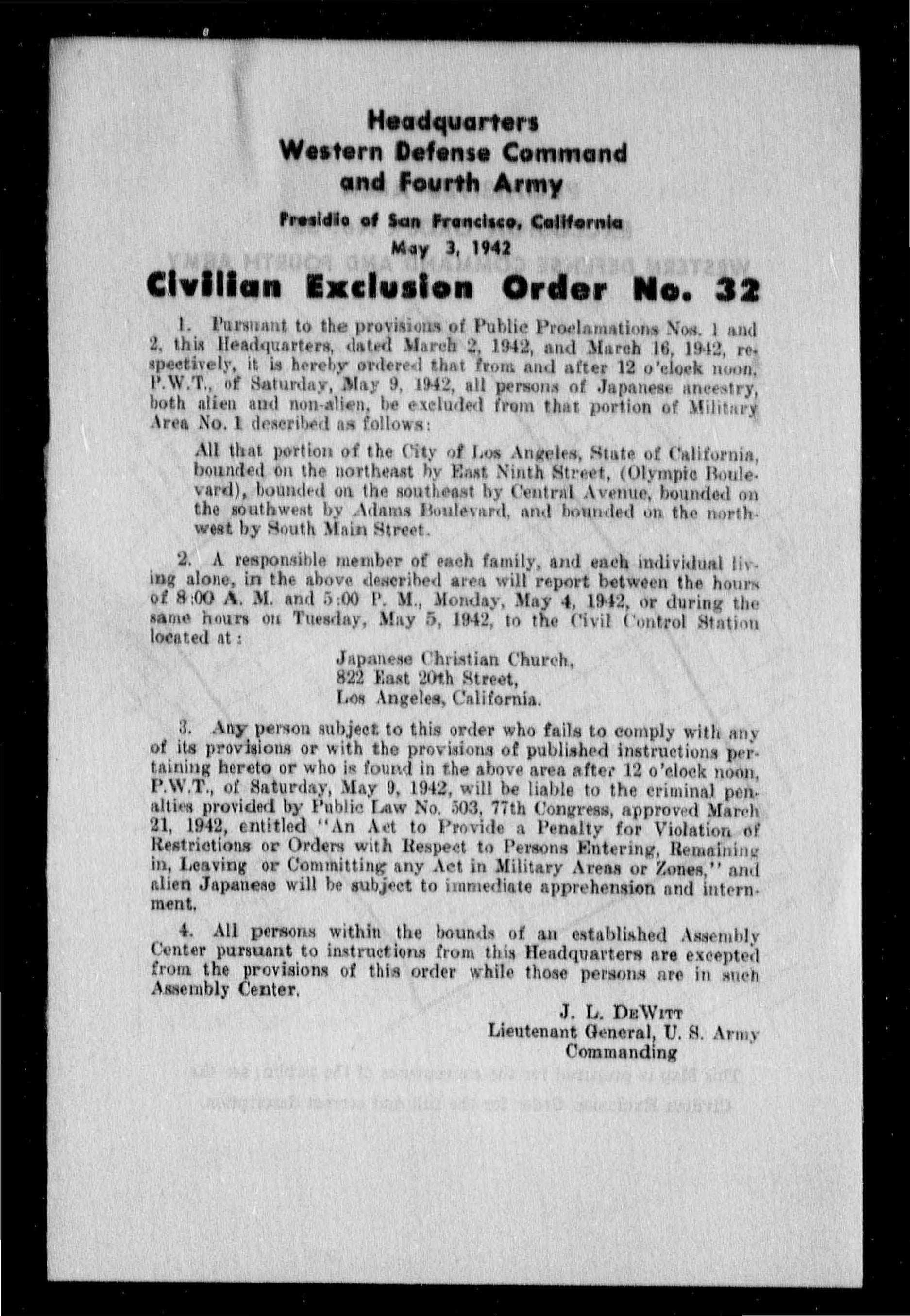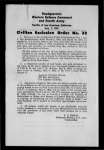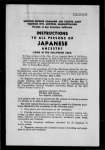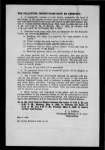Civilian Exclusion Order for Los Angeles
5/3/1942
Add to Favorites:
Add all page(s) of this document to activity:

Add only page 1 to activity:
Add only page 2 to activity:
Add only page 3 to activity:
Add only page 4 to activity:
Following the attack at Pearl Harbor on December 7, 1941, government suspicion arose around persons of Japanese descent. The entire West Coast was deemed a military area and was divided into military zones. President Franklin D. Roosevelt's Executive Order 9066 authorized military commanders to exclude civilians from military areas.
Although the language of the executive order did not specify any ethnic group, Lieutenant General John L. DeWitt of the Western Defense Command proceeded to announce curfews that included only Japanese Americans. Next, he encouraged voluntary evacuation by Japanese Americans from a limited number of areas; about seven percent of the total Japanese American population in the "military areas" complied. On March 29, 1942, under the authority of the executive order, DeWitt issued Public Proclamation No. 4, which began the forced evacuation and detention of West Coast residents of Japanese-American ancestry on a 48-hour notice.
The document seen here ordered that "all persons of Japanese ancestry, both alien and non-alien, be excluded" from a section of Los Angeles, California. This land was part of "Military Area No. 1," that included western Washington and Oregon, southern Arizona, and western California from the Oregon border to Los Angeles and the area south of Los Angeles.
It describes how one member from each Japanese American family should report to the Civil Control Station at the Japanese Christian Church in L.A., and that any person who failed to comply would be liable to criminal penalties. On March 21, 1942, Congress had passed Public Law 503, which made violation of Executive Order 9066 a misdemeanor punishable by up to one year in prison and a $5,000 fine.
The document also includes "Instructions to all Persons of Japanese Ancestry" about how they will be evacuated. It says that the Civil Control Office will transport them to an "Assembly Center" and provide services with respect to the leasing, sale, or storage of their property. It also outlines rules to follow, including bringing only limited clothing and household essentials, leaving pets behind, and reporting in person for further instruction.
Although the language of the executive order did not specify any ethnic group, Lieutenant General John L. DeWitt of the Western Defense Command proceeded to announce curfews that included only Japanese Americans. Next, he encouraged voluntary evacuation by Japanese Americans from a limited number of areas; about seven percent of the total Japanese American population in the "military areas" complied. On March 29, 1942, under the authority of the executive order, DeWitt issued Public Proclamation No. 4, which began the forced evacuation and detention of West Coast residents of Japanese-American ancestry on a 48-hour notice.
The document seen here ordered that "all persons of Japanese ancestry, both alien and non-alien, be excluded" from a section of Los Angeles, California. This land was part of "Military Area No. 1," that included western Washington and Oregon, southern Arizona, and western California from the Oregon border to Los Angeles and the area south of Los Angeles.
It describes how one member from each Japanese American family should report to the Civil Control Station at the Japanese Christian Church in L.A., and that any person who failed to comply would be liable to criminal penalties. On March 21, 1942, Congress had passed Public Law 503, which made violation of Executive Order 9066 a misdemeanor punishable by up to one year in prison and a $5,000 fine.
The document also includes "Instructions to all Persons of Japanese Ancestry" about how they will be evacuated. It says that the Civil Control Office will transport them to an "Assembly Center" and provide services with respect to the leasing, sale, or storage of their property. It also outlines rules to follow, including bringing only limited clothing and household essentials, leaving pets behind, and reporting in person for further instruction.
This primary source comes from the Records of the War Relocation Authority.
National Archives Identifier: 48552006
Full Citation: [R9.20] Civilian Exclusion Order Instructions; 5/3/1942; Reel 9; San Francisco Branch Evacuee Property Files, 3/18/1942 - 6/30/1946; Records of the War Relocation Authority, Record Group 210; National Archives at College Park, College Park, MD. [Online Version, https://docsteach.org/documents/document/civilian-exclusion-order-los-angeles, April 25, 2024]Activities that use this document
- Japanese American Incarceration During World War II
Created by the National Archives Education Team
Rights: Public Domain, Free of Known Copyright Restrictions. Learn more on our privacy and legal page.







